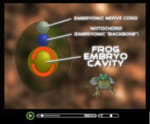Anatomical Homology
Anatomical Homology – A definition
Homology refers to similarity between characteristics in different species of organisms. Bats and butterflies are quite different from each other, yet both have wings to fly; bats fly and whales swim, yet the bones in a bat’s wing and whale’s flipper are strikingly similar. While ‘analogy’ refers to different structures which perform the same function, ‘homology’ refers to similar structures which perform different functions. Prior to the advent of Darwinism, homology was attributed to the existence of archetypes: biological structures are similar because they conform more or less to pre-existing patterns.
Charles Darwin, however, offered a different explanation for homology. Darwin proposed that bats and whales possess similar bone structures, not because they were constructed according to the same archetype (which would imply design and thus intelligent causation), but because they were inherited from a common ancestor.
Anatomical Homology – Does evolution have the goods?
Clearly, in the common ancestor, there would have been just one organ, with the current homologues being modifications of it. Thus, if the evolutionary account of homology is correct, then derivation from a common ancestral organ should be reflected in the homologous organs being derived from a comparable embryological source -- equivalent to that of the organ in the common ancestor. In other words, if two organs are derived from different embryological sources then it should be possible for them both to appear in the same organism (conjunction).
Combined with this understanding that homologous structures should be derived from comparable embryological tissues, it was thought that they should also be formed by similar developmental processes. So, if evolution is to provide an adequate explanation for homology, it is necessary to show that there is a viable route by which today’s homologues could have arisen from a common predecessor. Most obviously this implies a common embryological source, and secondly the use of comparable developmental processes. The problem is, in many cases, organs and structures which appear identical (or very similar) in different animals do not in fact develop from the same structure or group of embryo cells. It is not uncommon to find fundamental structures (e.g. the alimentary canal) that form from different embryological tissues in different animals. For example, in sharks the alimentary canal is formed from the roof of the embryonic gut cavity; in frogs it is formed from the gut roof and floor; and in birds and reptiles it is formed from the lower layer of the embryonic disc or blastoderm.
It is difficult to envisage why or how developmental processes should evolve dramatically differently yet still lead to substantially the same morphology which is the principal object of natural selection. Nevertheless, some see the different developmental mechanisms to ‘homologous’ structures not as a challenge to evolution but simply as evidence that developmental mechanisms have evolved while still retaining a similar end structure. But surely that is circular reasoning -- predicated on the assumption that the various groups with similar morphologies but different developmental mechanisms have evolved from a common ancestor.
Anatomical Homology – Conclusion
It is clear that the expected harmony between homology and evolution is lacking. Evolution no longer explains the facts of morphological homology and -- as a consequence -- homology is no longer the evidence for evolution that it was once believed to be. Indeed, not only is homology no longer the support for evolution that it was once believed to be, but the inconsistency between morphological homology and supposed phylogenetic relationships delivers a further blow to the theory of evolution -- if evolution does not explain homology, then the facts of homology are at odds with the theory of evolution. In particular, if similar morphological structures (structures that appeared homologous and had initially been seen as evidence of common ancestry) actually develop from different embryological sources, then this is strong evidence pointing away from an evolutionary relationship for the organisms concerned.

